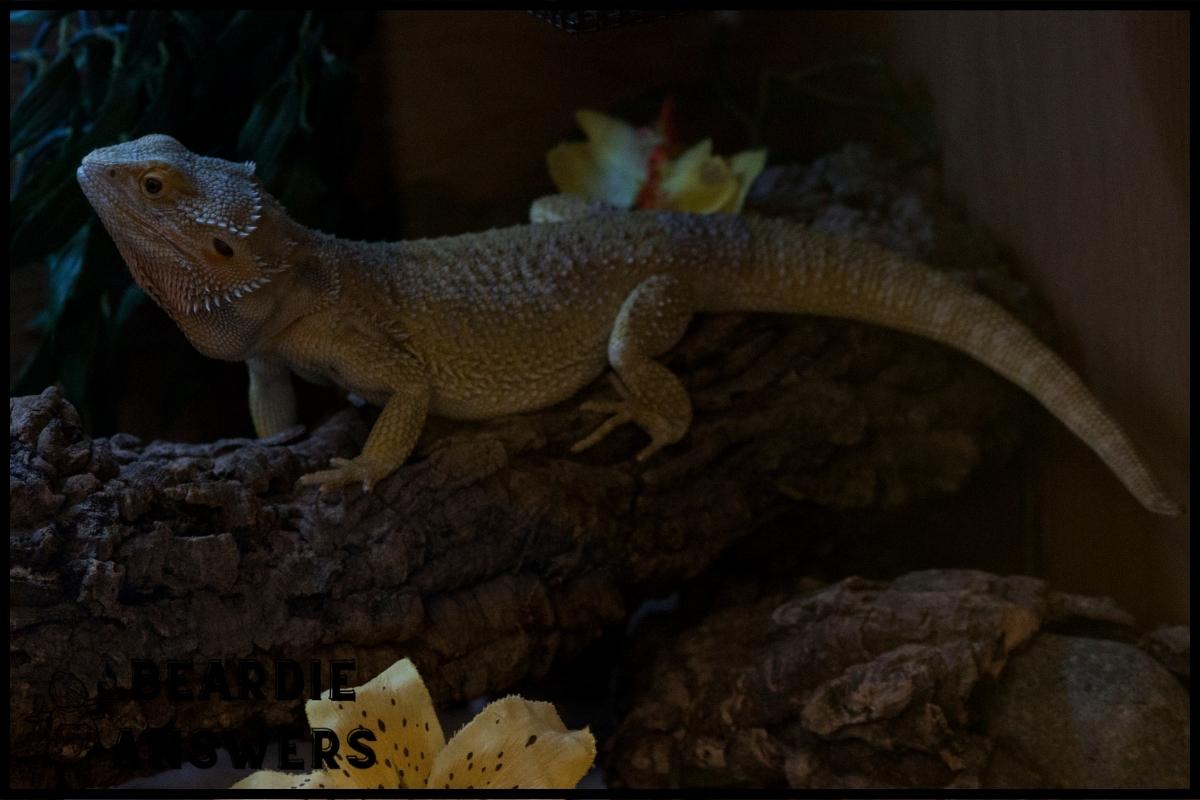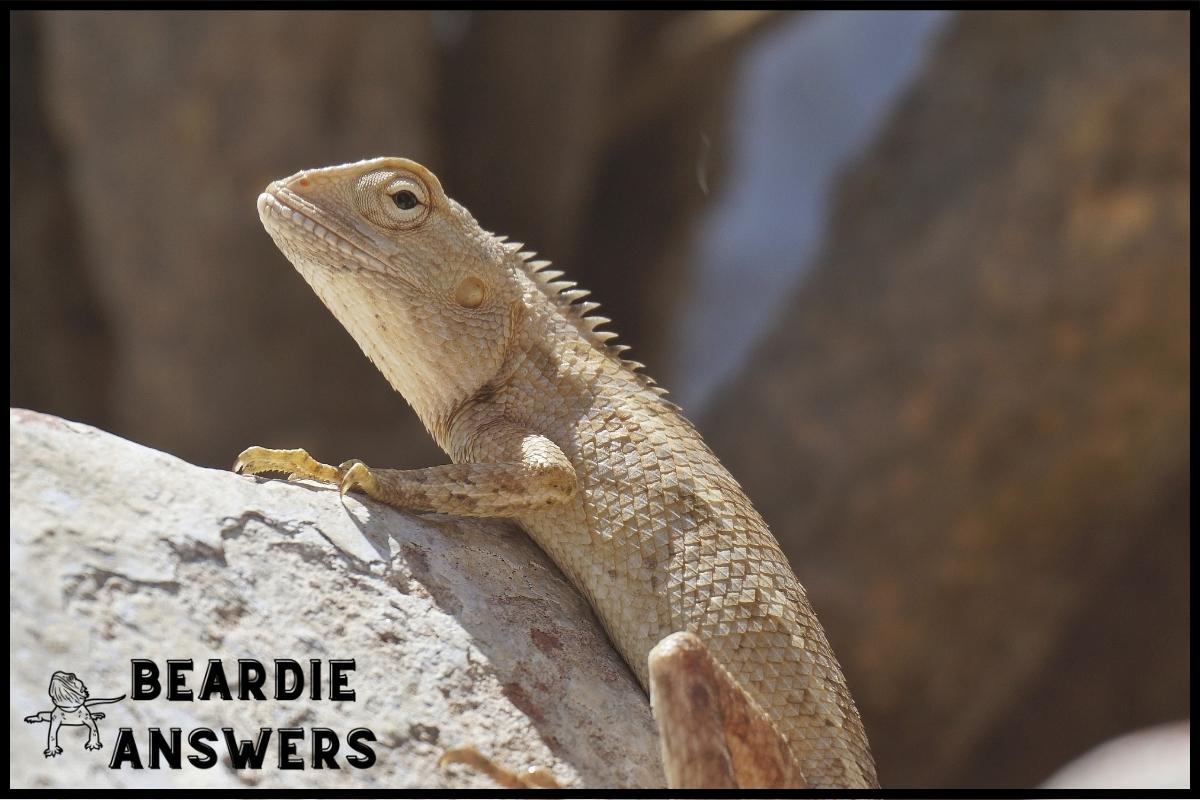How long do bearded dragon eggs take to hatch: Bearded dragon eggs typically take around 60-80 days to hatch, depending on the temperature and humidity levels of the incubator. It’s important to monitor the eggs closely during the incubation period, as fluctuations in temperature or humidity can affect the health of the developing embryos. Once the eggs hatch, the baby bearded dragons will need to be carefully cared for and housed in a warm, safe environment.
What You'll Learn
The Egg Laying Process
Bearded dragons lay eggs in a process that is quite complex and involved. It starts with the female selecting an appropriate spot to deposit her eggs, which should provide enough warmth and protection for them during their incubation period.
The next step of this process involves carefully positioning the eggs so they can receive optimal heat. This requires taking into account factors such as insulation provided by the surface on which they are laid, humidity levels, air flow and other environmental conditions.
Once everything has been taken care of, it’s time to move onto the next stage – hatching times! When it comes to hatching times, there are several factors that come into play. These include whether or not the dragon was able to find an ideal location for egg laying, how well-insulated the nest site is, temperature fluctuations throughout the day and night, humidity levels within the egg chamber, and even when exactly she started depositing her eggs.
All these elements contribute in some way to determining just how long bearded dragon eggs take to hatch – something we will explore more deeply further along in this article. For now though, let us consider what kind of incubation methods are available for helping ensure successful hatching results.
Factors That Affect Hatching Times
When it comes to how long bearded dragon eggs take to hatch, the incubation period is typically 60-80 days. However, there are a few factors that can affect hatching times:
- Egg selection: Certain types of eggs will require longer or shorter incubation periods depending on their size and thickness.
- Temperature fluctuations: Sudden changes in temperature during the incubation period can cause delays in hatching.
- Humidity levels: Too much or too little humidity can also slow down the egg development process.
Knowing which factors may influence your baby dragons’ hatching time allows you to better prepare for their arrival and gives them a greater chance of success as they emerge into the world! As temperatures play a critical role in successful incubation, let’s explore what kind of conditions bearded dragons need next.
The Role Of Temperature
Previous section discussed the factors that affect hatching times of bearded dragon eggs. Temperature is a major factor in influencing how long it takes for an egg to hatch, so let’s explore the role of temperature further.
When incubating eggs, different temperatures can lead to different outcomes: too hot or cold and you risk killing off your developing embryos. To ensure successful development, proper incubation temperatures must be maintained throughout the entire process. Below is a table summarizing some important considerations when managing incubation temperatures:
| Temperature Range | Effects on Development |
|---|---|
| 97-98°F | Ideal; produces female dragons |
| 99-100°F | Produces male dragons |
| 101-102°F | Risk of embryo death |
Egg candling (viewing internal structures through light) can also help indicate if eggs are fertile and viable as they develop over time. In cases where there are multiple clutches with same parents, due to differences in environmental conditions such as temperature, one clutch may take longer to hatch than another. Thus, it is important to maintain optimal incubation temperatures at all times during the hatching process.
The next step in understanding bearded dragon egg development is exploring the role of humidity…
The Role Of Humidity
The incubation of bearded dragon eggs is a delicate process, much like the nurturing of any other living creature. The environment in which they are kept must be carefully monitored and controlled to ensure their health until hatching.
Humidity plays an integral role in this process as it can have significant effects on egg development and viability. Bearded dragon eggs require relatively low humidity levels between 20-30% during incubation, with 30% being the absolute maximum recommended for successful hatchlings. This allows enough moisture in the air to keep them hydrated but not too much that could cause bacteria or fungus growth – both of which can lead to death of the embryo.
Environmental requirements such as temperature, substrate type, and ventilation should also be taken into consideration when setting up an incubator for these eggs. For optimal results, various methods used for controlling humidity must be employed depending on the specific needs of each species.
While most breeders opt for traditional techniques involving damp sponges placed inside plastic containers filled with water, others experiment with sophisticated procedures using automated digital sensors connected to humidifiers or dehumidifiers. Whatever method chosen, proper maintenance and attention must be paid throughout the entire incubation period to guarantee healthy hatchlings.
Preparing For Hatching
When it comes to the hatching process, there are certain measures that can be taken in order to ensure the eggs have the optimal conditions for development.
It’s important to consider incubation techniques and egg turning during this stage of preparation.
To get started, you should first make sure your bearded dragon eggs are stored at a temperature between 85-90 degrees Fahrenheit. This will provide them with enough warmth for proper growth.
Additionally, if possible try to keep the humidity levels in check as too much moisture could cause mold and other damage to your clutch of eggs.
Lastly, turn the eggs daily or every other day so that all sides receive equal exposure and ventilation.
After taking these steps, you’ll want to monitor the progress of your future hatchlings closely until they finally emerge from their shells.
With patience and care, you’ll soon have an adorable group of little dragons on your hands!
Caring For The Hatchlings
After all the preparation and care taken to ensure a successful incubation period, it’s time for the much-anticipated hatching of bearded dragon eggs. During this stage, there are still several steps that need to be followed in order to provide the best environment for the hatchlings.
Incubation tips such as maintaining consistent temperatures throughout the process, providing enough humidity, and ensuring proper ventilation are essential for ensuring healthy baby dragons.
Once hatched, it’s important to maintain adequate lighting needs for your new reptiles. This can vary depending on species or age but is generally recommended at around 12 hours of light each day. It’s also important to provide UVB exposure which helps with calcium absorption in their bodies. Provide basking spots so they can warm up when needed and make sure those areas don’t get too hot!
Finally, continue to monitor humidity levels while keeping the tank clean from any waste products produced by your little ones. They’ll need plenty of space and items like hides or rocks where they can feel secure as they explore their new home. With these considerations in mind, you’re sure to have happy and healthy hatchling dragons who will grow into beautiful pets!
Conclusion
To conclude, bearded dragon eggs take between 60-80 days to hatch. That’s a long time for us humans, but it gives the young dragons plenty of time to develop and be ready for their new lives outside the egg!
It’s important to remember that these factors can affect hatching times, so keeping temperature and humidity levels consistent is key to ensuring your dragon babies arrive safe and sound.
Interestingly, studies have shown that incubation temperatures slightly above optimal can result in larger hatchlings – one more reason to keep an eye on those thermometers!

Hi! My name is Bryan, I am the “one behind the words” here are BeardieAnswers.com. I believe that providing quality care and nutrition is the best way to ensure the health of your pet. Every beardie is special and deserves the best care and attention. If you have questions about your bearded dragon, please don’t hesitate to ask! View My Full Author Page




